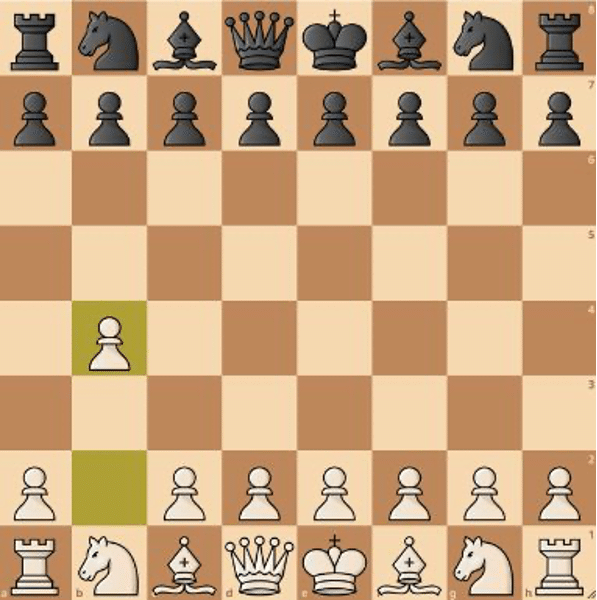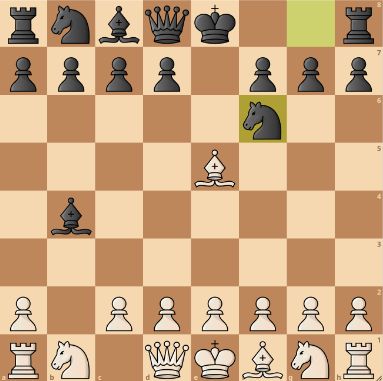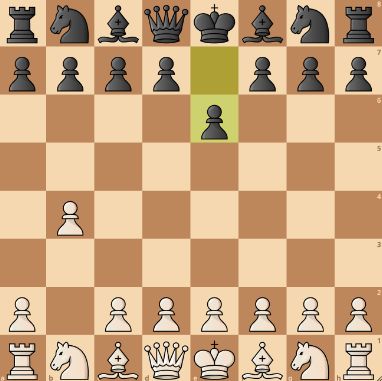The Polish Opening or Sokolsky Opening is a flank opening the E.C.O. characterizes by the move 1.b4. It is considered an unorthodox opening because it exposes White’s defenses and does not outrightly aim to control the center. But can the Polish Opening be valuable to us despite its rarity and perceived lack of sting?
Understanding the Polish Opening

The Opening was named after Alexey Sokolsky and can be traced to an 1893 game between Bernhard Fleissing and Carl Schecter. It was further unveiled to the public’s memory when Savielly Tartakower defeated Richard Reti in a 1919 match. It is the ninth most popular Opening move, according to chess.com.
The Polish Opening explained on Chess Doctrine states that the Opening is commonly played in a significantly casual setting. There might be better choices for a highly formal setting. However, it does have some exciting motives. Firstly, the Opening prepares a fianchetto on b2, a trait of a Hypermodern opening.
It only differs from Larsen’s Opening (1.b3) because the b-pawn opening move advances two squares in the Polish Opening. This two-square advancement tempts the Black pieces to move at the seemingly free pawn. This risk of losing a pawn on the second move gives this Opening its unique edge.

Riskiness for Beginners
As much as pawns carry just a point in a game, they become priceless in the endgame, so they must be guarded jealously. Therefore, offering them up casually, as done in the Polish Opening, might backfire heavily. However, the b4 pawn is merely a watered-down gambit.
If Black responds to White’s 1.b4 with 1…e6, Black’s kingside bishop targets the b4-pawn. However, they do not try to defend this threatened pawn unless White is oblivious to the continuation of the Polish Opening.
Instead, they continue their development naturally with a fianchetto. The catch is that this fianchetto creates a condition surrounding Black’s next move and original intention. If Black proceeds to capture the unguarded b4-pawn, White unleashes a more significant threat by capturing Black’s g7-pawn, exposing the trapped rook to a capture — White wins the exchange.

Strategic Depth and Flexibility
The strategy behind the Polish Opening is relatively simple and tricky at the same time. Chessable cited a top-level game (played in a 2021 F.T.X. Crypto Cup) that expresses the strategic depth of the Opening. In the game, Nakamura responded with 1…e5, which further highlights the flexibility of the Polish Opening.
Magnus Carlsen played the fianchetto, threatening the e5-pawn and seizing control of the center. Nakamura obliged him, relinquishing his central e5-pawn to capture White’s b4-pawn. Of course, Magnus Carlsen captured the e5-pawn to compensate for his lost pawn.
Nakamura continued with development by playing 3…Nf6 and the game was balanced until the end, where it finished with a draw. Mind you, Nakamura led the game with a pawn from the middlegame, and it took Carlsen’s solid endgame knowledge to tie the game. The draw agrees with the statistic presented by chessdoctrine.com, stating that white only has a 25% chance of winning, which is less than the 32% losing chance and 43% drawing chance.
The point we extract from this game is that the Polish Opening might contain some surprises at the game’s start, but as the game progresses, your opponent quickly gains a hold and can challenge for the ultimate prize. The Polish Opening also does not transpose into any other opening line, so in that regard, it is not quite flexible.
Aside from accepting the b4-pawn sacrifice, how else can the Polish Opening proceed after 1.b4 e6 2. Bb2 Nf6?
Black has eliminated White’s fianchetto threat by developing the knight to f6. Now, White has a pawn hanging and must take action to protect it; otherwise, it will be lost aimlessly. The usual move here is b5, advancing the pawn deeper to control the queenside further.
From this position, Black might move to eliminate such an advanced pawn, but rather than exchange such an advanced pawn, the engine advises to protect the b5-pawn with a4.

Transition to Middlegame
The Polish Opening typically transitions into the middlegame with the center pawns yet to wrestle for center control. And since White has a fianchettoed bishop, both sides must re-calibrate their approach in advancing the center pawns.
Also, White’s queenside has a high probability of being exposed to threats, so if you play as White, develop pieces to defend that side of the board, and if you play as Black, attack the queenside.
Final Thoughts
If you are currently on a learning spree of Openings, the Polish Opening is undoubtedly worth an attempt. Still, like gambits, it is highly crucial to have a basic understanding of the continuation lines. Evaluate your opponent’s capabilities and style before using this Opening. A player who does not always stick to the same Opening might know how to cause you problems as Black against the Polish Opening.
